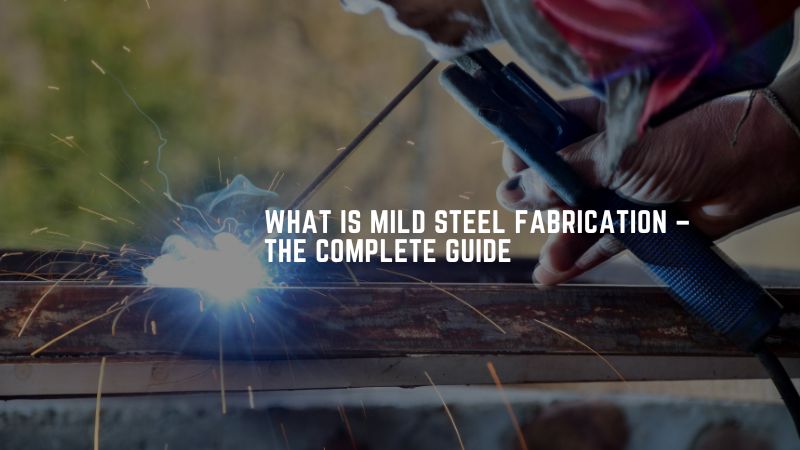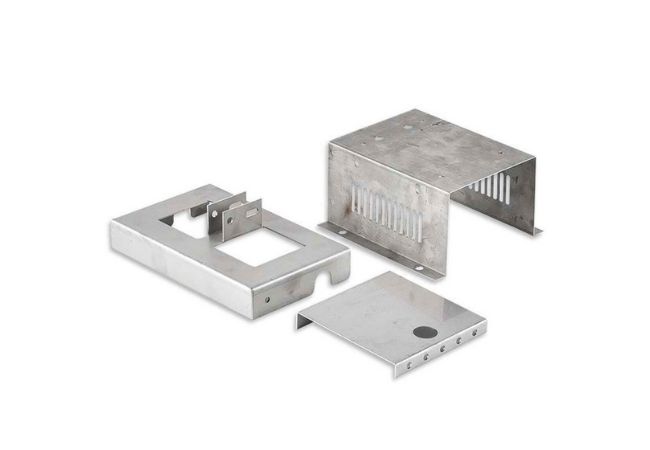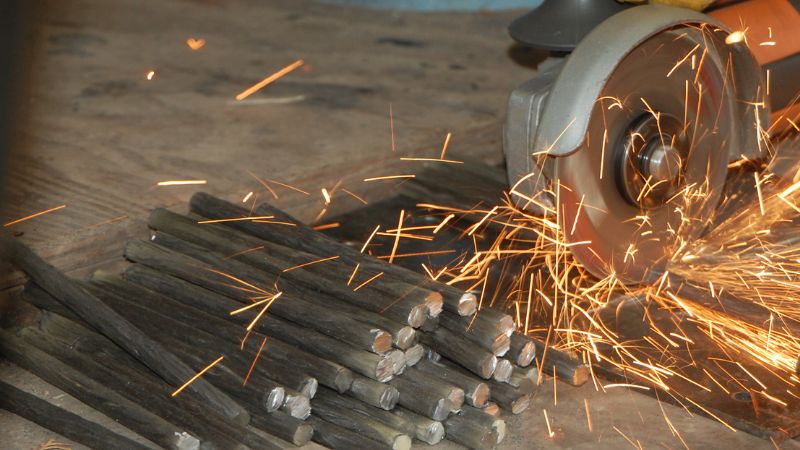
Mild steel fabrication allows you to make parts and components for use across various industries and sectors. You can cut, form and assemble mild steel material to make different parts and components.
This guide will help you choose the right mild steel grade, understand suitable fabrication technique and finishes.
Keep reading to learn more.
Mild Steel Grades Used During Fabrication

Fabrication of mild still can involve both hot and cold rolling techniques to impart and enhance certain properties. There are several different mild steel grades available for fabrication as follows:
1010 Mild Steel
Contains 0.10% carbon with low strength but capable of increasing tough quenching and tempering processes. It is available in both strips and sheets finding use in the automobile industry to make body panels and transmission covers.
1018 Mild Steel
This mild steel grade is cold drawn with 0.18% carbon and features high formability and welding qualities. Steel bars of these grade are highly machinable offering enhanced straightness, improved surface texture and great dimensional control.
Uses: Making machine parts and automotive components such as gears and spacers.
1020 Mild Steel
With 0.20% carbon content, this grade is highly formidable and typically cold drawn with improved welding qualities, machinability and ductility. You can polish and turn 1020 mild steel.
Features
- Resistance to flame and induction hardening
- Low tensile strength
Uses:
- Transformed into tubes for making axles, camshafts, pins and spindles.
- Making machine parts such as gears.
Grade A Steel
Also, weathering steel, this grade is highly resistant to corrosion induced by the elements such as humidity and air. Its surface oxidizes to form a barrier layer against atmospheric corrosion finding use in exposed structures.
Features:
- Highly machinable especially drilling and machining operations.
- Shear or flame cutting applicable.
- Capable of both manual and mechanical welding techniques.
- Low maintenance qualities
- High strength and stiffness
- Long lasting and recyclable
Uses: Making steel frames for structural components and features such as bridges.
Galvanized Mild Steel

GMS is essentially mild steel galvanized by dipping in molten zinc to offer increased corrosion protection especially for external applications. It offers improved resistance to adverse weather such as heavy rainfall and temperature extremes.
Features
- All welding techniques are applicable.
- Cutting using snips, shears, flame or disk cutter.
- Good adhesion and resistance to cracking allows forming.
- Machinable with processes such as drilling applicable.
Limitation
- Undertaking fabrication techniques in galvanized mild steel produces highly irritant dust particles.
Uses: Frameworks and panels for vehicles and outdoor constructions such as trailers and sheds.
Free Cutting Mild Steel (Grade EN1A)
This grade is cold drawn and capable of lead addition to enhance machinability especially when undertaking complex machining and drilling processes.
Uses: Precision machining of parts such as bolts and nuts.
Features
- Capable of high speed machining.
- Standard ductility.
- Easily cut using shear and grinding methods due to high sulphur content.
- Possible to harden by carburizing or case hardening.
- Reliable corrosion resistance.
Limitations
- Poor transverse qualities making it unsuitable for hollow parts.
- Using cutting oils as lubricants can stain the metal surface.
- Not suitable for welding operations especially when leaded.
- Incapable of through or induction hardening.
Grade EN3B
Passed through cold finish and drawing to enhance dimensional accuracy, stress resistance, tolerance and surface smoothness. Cold drawing involves techniques such as hammering and rolling.
Features
- Highly machinable with methods such as drilling.
- Cutting using cutting discs.
- Welding with or without pre-heating.
- Impressive ductility.
- Annealing through slow heating and tempering.
- Case hardening and carburizing possible.
- Hot forging at over 900°C.
- Better corrosion and rust resistance.
Limitation
- Unsuitable for through hardening.
Uses: Producing parts with high precision such as threaded bars, gears and axles.
Advantages of Mild Steel Fabrication Parts

Use of mild steel in fabrication is essential in manufacturing various high strength parts employed across different sectors. The benefits in utilizing mild steel fabrication include:
a. Cost-Effectiveness: The low carbon content in mild steel makes it least costly among carbon steels allowing its use affordably.
b. Ductile: Mild steels have impressive ductility capable of tolerating plastic deformation by force application such as bending and stretching without distortion.
c. Recyclable: You can recycle mild steel numerous times without diminishing its qualities making it cheap and environmental friendly.
d. Weldable: Joining mild steel parts is easy using virtually all welding techniques and without necessarily employing pre-heating techniques.
e. Capable of carburizing: While mild steel has low tensile strength, you can carburize it to enhance its wear and strength qualities.
Drawbacks in Mild Steel Fabrication
There are certain limitations when employing mild steel in fabrication of parts restricting their use in certain applications.
- The low carbon content results in reduced tensile strength restricting its use in structural projects requiring load bearing.
- Mild steel offers low resistance to corrosion requiring use of surface treatments to enhance its qualities in this regard.
Secondary Mild Steel Fabrication Techniques
Secondary mild steel fabrication techniques serve to improve its mechanical qualities and corrosion resistance for end-use. Common methods employed to serve this purpose are: heat and surface treatment.
A. Heat Treatment
Heat treatment of mild steel seeks to alter the carbon content and enhance certain desired properties such as hardness and ductility. Some heat treatment methods include: annealing, quenching and normalizing.
B. Surface Treatment
Mild steel surface treating seeks to improve the surface such that it is more weldable and less susceptible to corrosion. Surface treatment includes: galvanizing, painting, anodizing, and powder coating.
Finishing Mild Steel Fabrications

Finishing mild steel is a secondary fabrication technique that is essential in enhancing the durability of products. Common mild steel finishing methods include:
- Electroplating: Overlaying the mild steel surface with a thin metal layer by electrical deposition augmenting rust and corrosion resistance.
- Galvanizing: Coats the mild steel with a zinc layer through a dipping process offering enhanced protection against rust and corrosion.
- Painting: Applying a coat of paint over the steel substrate to offer barrier protection from atmospheric elements.
- Powder Coating: Application of dry powder and curing by heating to make a layer highly resistant to corrosion and wear.
Applications of Mild Steel Fabrication
Use of fabricated mild steel parts cuts across industries thanks to the enhanced mechanical properties and corrosion resistance. Mild steel fabrication finds use in the following instances:
- Construction: Carburized mild steel finds use in steel structures such as trusses and frames for bridges and buildings.
- Kitchenware: Surface treated mild steel finds use in kitchen equipment and appliances such as pans and pots for its durability.
- Machinery: Many machine parts and components such as gears, axles, shafts and bearings employ mild steel for its strength and ductility.
KDMFAB Capability in Mild Steel Fabrication
At KDMFAB, we can handle all your mild steel fabrication needs. Whether you want:
- Precision mild steel fabrication
- CNC cutting mild steel
- Welding mild steel
- Forming mild steel
- Riveting mild steel
- Laser cutting mild steel, etc.
KDMFAB offers a range of unlimited possibilities in mild steel fabrication industry. Additionally, we apply appropriate surface finishing technologies on mild steel parts.
Mild Steel Fabrication HSN Code
HSN Code: 72071920
Conclusion
With the right mild steel fabrication technology and best alloys, you can make high quality parts. From simple to complex mild steel part designs; you are always sure of unmatched strength and quality.
More Resources:
What is Mild Steel – Source: Metal Supermarket
Carbon Steel – Source: Wikipedia
Sheet Metal Fabrication – Source: KDMFAB
What is Mild Steel Fabrication – Source: Steelon




